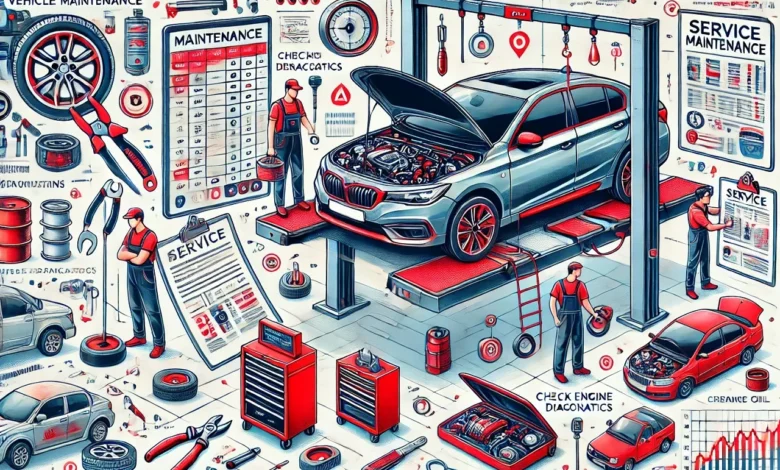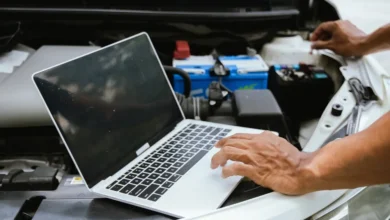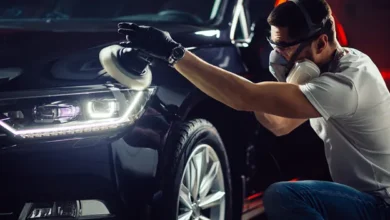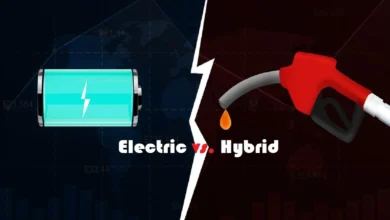
The planned preventive system of repair and maintenance of vehicles adopted in our country means that vehicle repair is carried out as needed, and maintenance is carried out according to plan.
Maintenance includes the following types of work:
- Cleaning and Washing
- Control and Diagnostic
- Fasteners
- Lubricants
- Refueling
- Adjusting
- Electrical Engineering
- Other work performed mainly without disassembling units and removing individual components and mechanisms from the vehicle.
If during maintenance it is not possible to ensure that individual components or mechanisms are in full working order, they should be removed from the vehicle for diagnostics on special stands and devices.
Types of Maintenance
Maintenance is divided into the following types, according to frequency, list and complexity of the work performed:
- Daily Maintenance (DM)
- First Technical Service (TO-1)
- Second Technical Maintenance (TO-2)
- Seasonal Maintenance (SM)
Each type of maintenance includes a strictly established list of works or nomenclature of operations. These operations are divided into two parts:
- Control, which is a mandatory operation
- The performance is carried out as needed
To obtain complete information about the technical condition of the vehicle, diagnostics are carried out, which is part of the maintenance process.
Daily Maintenance
It is performed daily between shifts when the vehicle returns from the line and includes:
- Inspection and control work of mechanisms and systems responsible for traffic safety, body, cabin, and lighting devices.
- Cleaning, washing, drying, and wiping operations.
- Refuel the vehicle with fuel, oil, compressed air, and coolant.
- Car wash is carried out as needed depending on weather, climate conditions, and sanitary requirements, as well as the requirements for the appearance of the car.
First maintenance
First maintenance TO-1) consists of the full implementation of:
- External technical inspection of the entire vehicle
- Control and diagnostic, fastening, adjustment, lubrication, electrical, and refueling work with checking the operation of the engine, steering, brakes, and other mechanisms.
To diagnose the mechanisms and systems that ensure the safety of the vehicle, a set of diagnostic works (D-1) is used, which is performed during or before TO-1.
TO-1 is carried out periodically at established intervals based on mileage and should ensure the trouble-free operation of vehicle units, mechanisms, and systems within the established frequency.
In order to provide the station where TO-2 will be carried out with information about the condition of the vehicle, an in-depth diagnostics (D-2) is carried out one or two days before, and if a large volume of work is detected, the vehicle is redirected to the current repair area.
Second Maintenance
Second maintenance (TO-2) is carried out with the vehicle taken out of service for 1-2 days and includes the performance of a specified volume of fastening, adjustment, lubrication and other work, as well as checking the operation of units, mechanisms and devices during operation.
As already mentioned above, D-1 diagnostics is intended mainly to determine the technical condition of units, assemblies, and vehicle systems that ensure traffic safety. For D-1 diagnostics of mechanisms that ensure traffic safety, high-speed automated means for diagnosing brake mechanisms and steering are required.
Before and during D-2, the necessary preparatory work is carried out in accordance with the accepted diagnostic technology, such as: pumping up tires, installing the car on a stand, connecting sensors, warming up the engine and other units to operating temperature, etc.
To diagnose the car as a whole and its units, stands with running drums are required to determine power and economic indicators, the state of systems and units, as well as diagnostic conditions that bring them as close as possible to the operating conditions of the car. For combined diagnostics of maintenance with repair, mobile and portable diagnostic tools and devices should be used.
Seasonal Maintenance
Seasonal maintenance is carried out twice a year and is the preparation of rolling stock for operation in cold and warm seasons. It is recommended to carry out SO separately for rolling stock operating in a cold climate zone. For other climatic zones, SO is combined with TO-2 with a corresponding increase in the labor intensity of the main type of maintenance.
Car Repair
According to the general phenomena, there are two types of repair of vehicles, units, and components:
- Routine repairs (TR) are performed in motor transport enterprises.
- Major repairs (CR) performed at specialized enterprises.
Current Repairs
TR is carried out at service stations and eliminates minor faults and failures during vehicle operation. This allows you to close all problems, according to the standards of the vehicle’s mileage before major repairs.
Diagnostics during routine repairs are performed to identify a failure or malfunction and find the best way to eliminate them, for example, on-site, by removing the unit or assemblies with their complete or partial disassembly, as well as adjustment. Routine repairs include disassembly, assembly, metalwork, welding and other work, as well as replacement of parts in units (except for basic ones) and individual units and assemblies in the car that require routine or major repairs.
During routine repairs, units and assemblies on a vehicle are replaced only if the time required to repair the unit or assembly exceeds the time required to replace it.
Major Repairs
The overhaul of cars, units, and assemblies is performed at specialized repair enterprises, factories, and workshops. It provides for the restoration of the operability of cars and units until the next major overhaul. The cars are written off at 80% of the mileage standards for new cars and units.
During a major overhaul of a vehicle or unit, it is completely disassembled into units and parts, which are then repaired or replaced. After all parts have been replaced, the units are assembled, tested, and sent for vehicle assembly. The impersonal repair method assumes that the vehicle is assembled from previously repaired units.
- After a major overhaul, diagnostics are carried out to check the quality of the major overhaul.
- As a rule, a vehicle undergoes one major overhaul during its entire service life.
Conclusion
Effective maintenance and repair systems are crucial for ensuring the long-term functionality and safety of vehicles. The planned preventive system adopted in our country encompasses daily, first, second, and seasonal maintenance, each with specific tasks designed to address vehicle needs based on frequency and complexity. Routine repairs handle minor issues, while major repairs provide a comprehensive restoration of vehicles and their components. A well-maintained vehicle contributes to reduced downtime and improved operational efficiency, underscoring the importance of a systematic approach to vehicle care.
We hope you found this article helpful. If you did, be sure to check out our blog for more great content like this.





